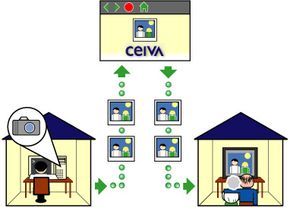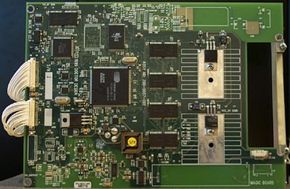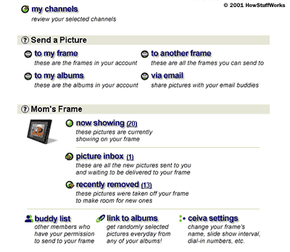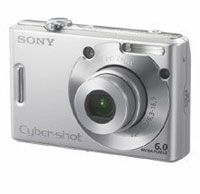We all have at least one technologically challenged relative. We can e-mail photos or post them on a personal Web page for some of our loved ones, but there are others who want nothing to do with a computer, let alone the Internet.
The perfect gadget for sharing photos with the computerless is the digital picture frame. This is a device about the size and shape of an ordinary picture frame. It contains an LCD screen, which displays multiple photos in a slideshow format, and it connects to the Internet via phone line to download new pictures and information to display on the screen.
Advertisement
Several companies have made digital picture frames, including Polaroid, Kodak, Ceiva and GiiNii. The frames are fairly similar in construction, though they do offer some different features.
In this edition of HowStuffWorks, we'll take a look at the Ceiva Digital Photo Receiver. Before we get into exactly how it works, let's see what it does.
Advertisement







